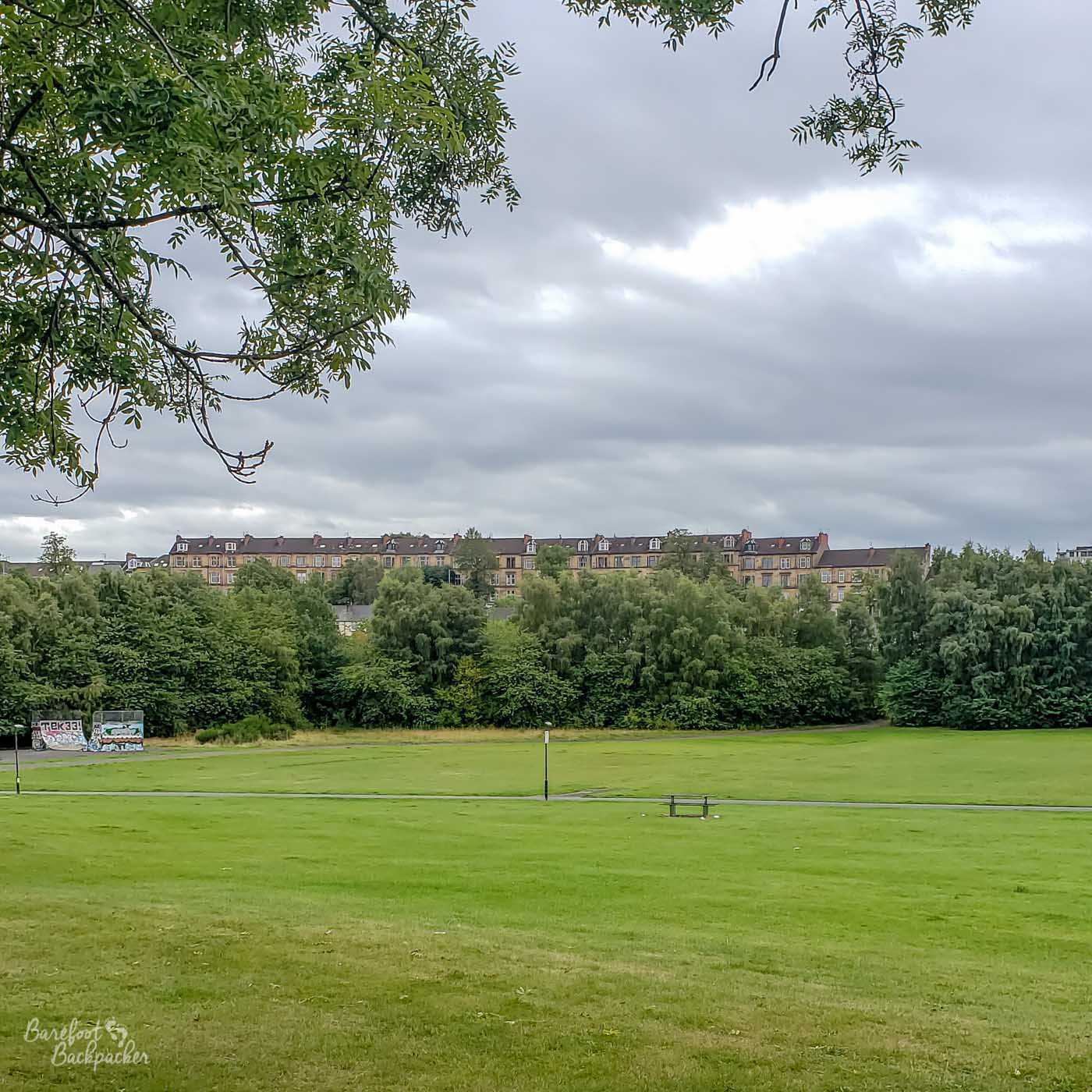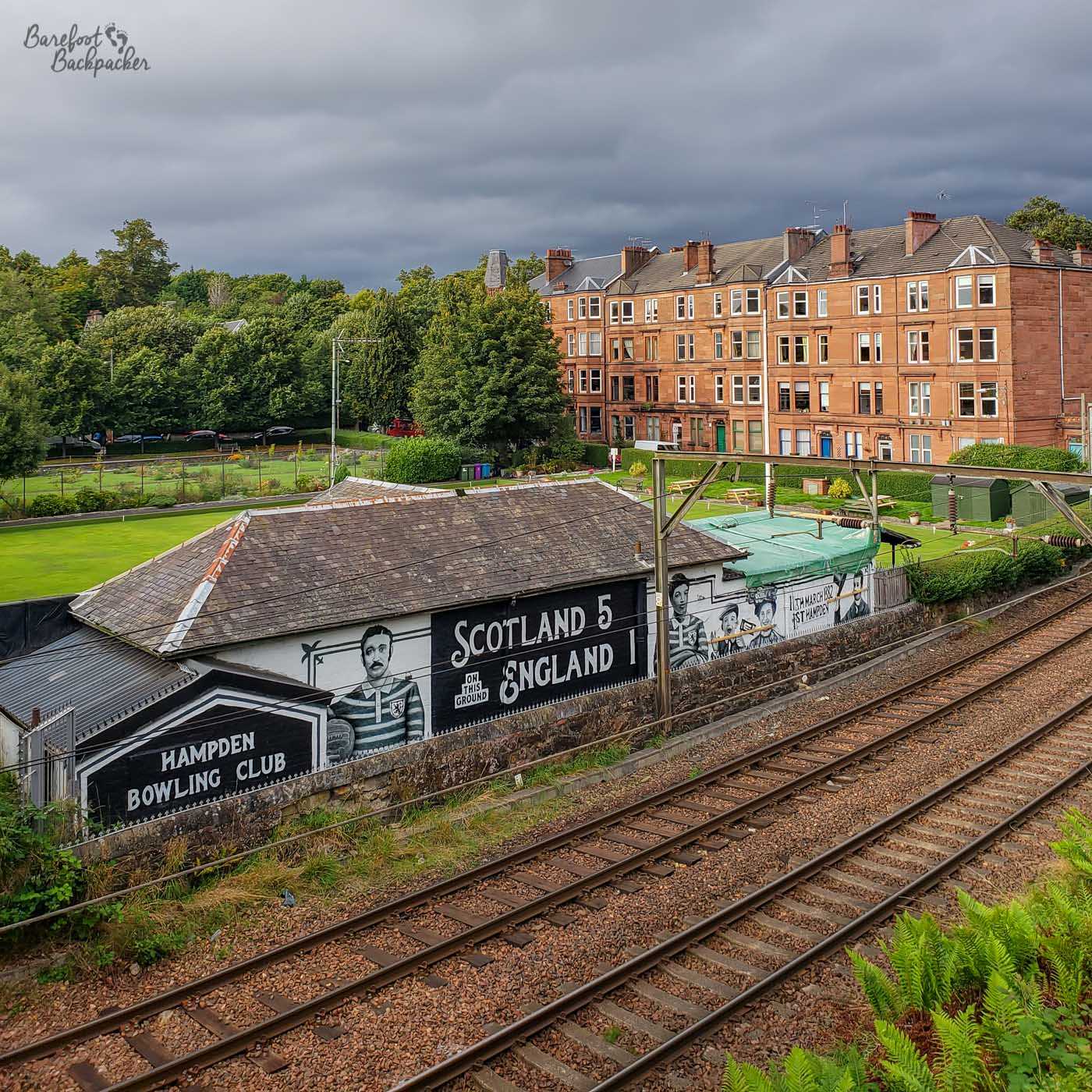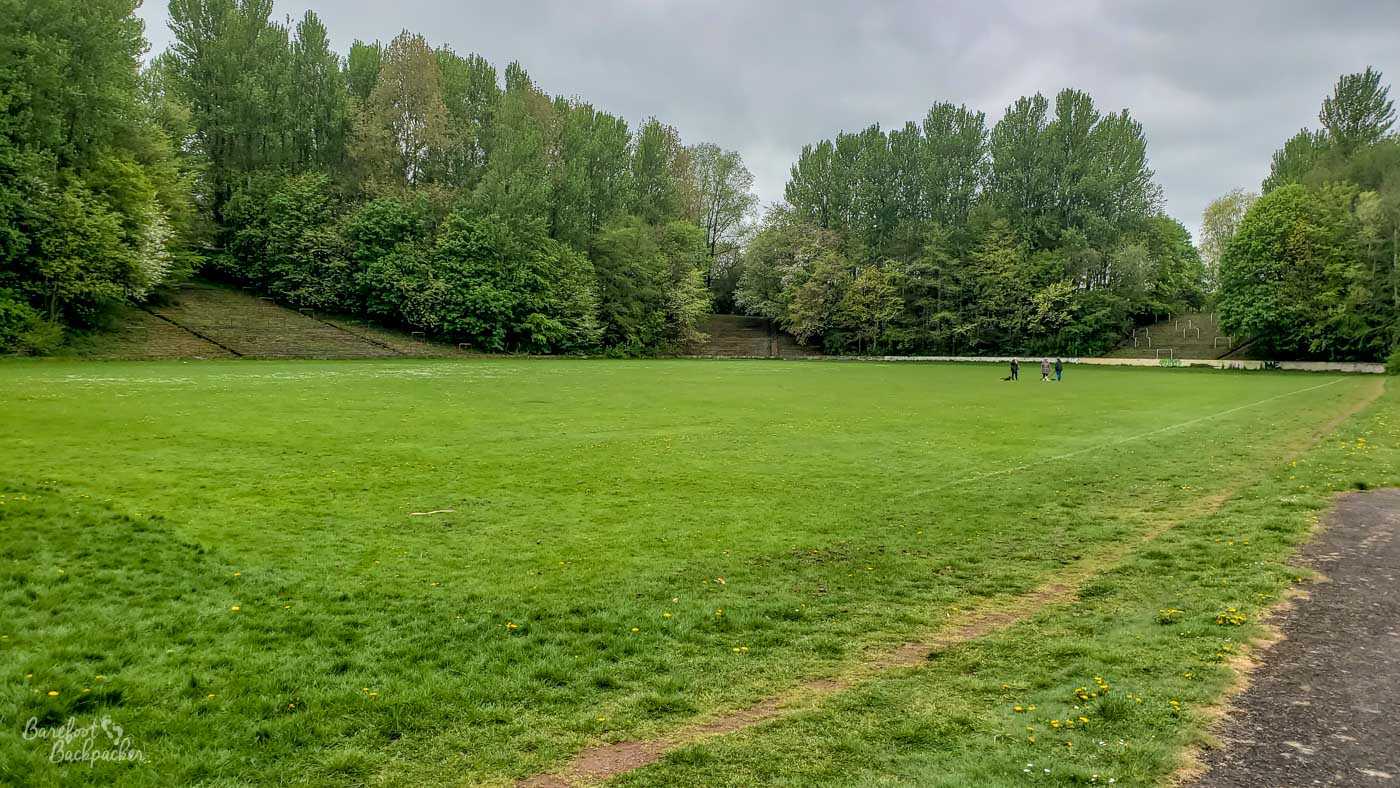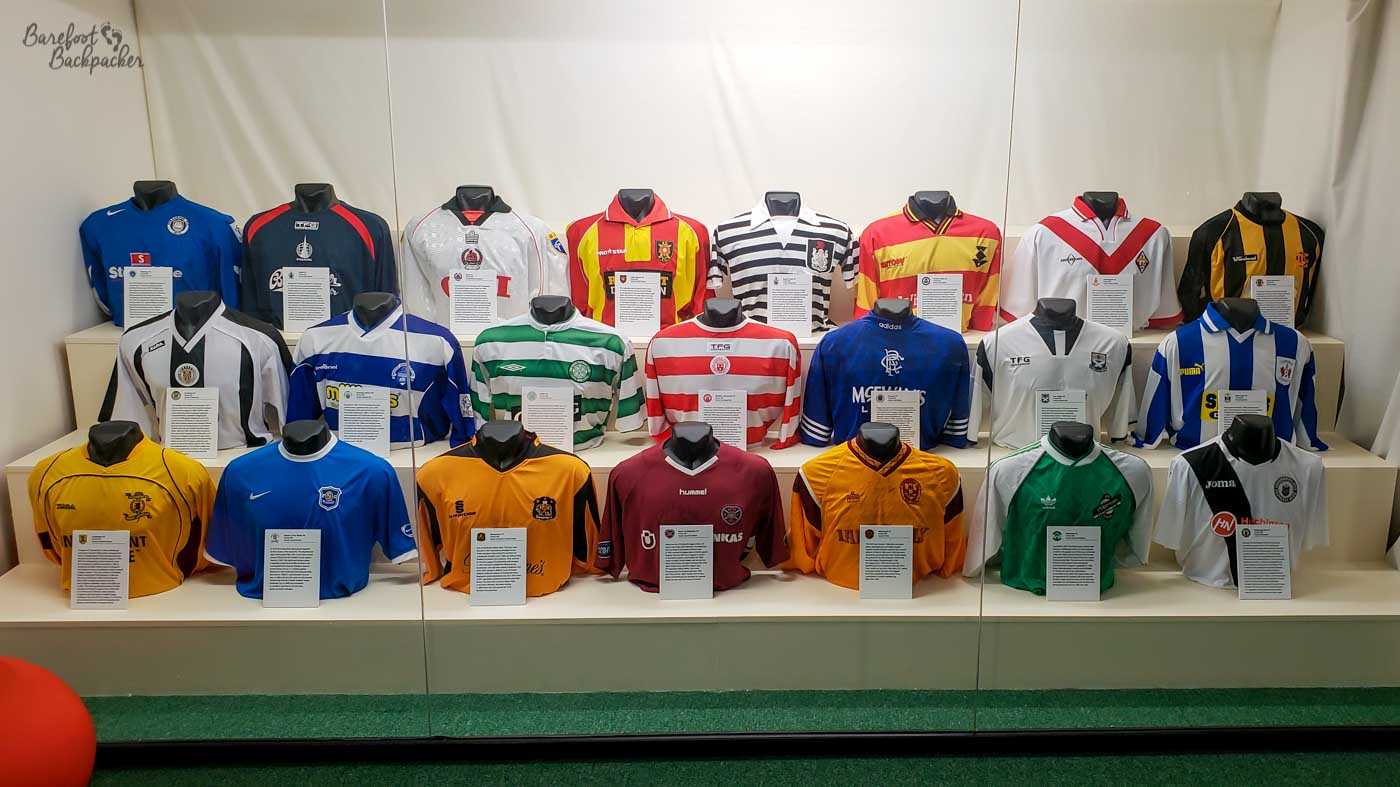The Southside of Glasgow is fundamentally important for the history of the game of football (soccer). The Scottish Football Association is the second oldest in the world, after England’s. This is one reason there’s no unified UK team like there is in, say, Athletics. Glasgow Southside is where the association was founded, and where the oldest surviving club still play. And Glasgow, along with Sheffield in Yorkshire, was at the forefront of creating a unified code for the sport. Even to this day the area is an important hotbed for the game, being the home of Scotland’s National Stadium.
Where was the SFA founded
Despite, or perhaps because, the Scottish Football Association (SFA) is the second oldest in the world, surviving details on its early days are surprisingly thin. Even the vaguest details were only discovered in the late 2010s in a forgotten archive.
Seven clubs founded the SFA on 13 March 1873, in a meeting at a place called Dewar’s Hotel. This seems to have been at 11 Bridge Street, the address of which matches that of an Indian Restaurant up the A77 just south of the Clyde, most of the building of which doesn’t look that old. I don’t have a picture of it.
Of those seven clubs, five (Queen’s Park, Clydesdale, Third Lanarkshire Rifle Volunteers, Dumbreck, and Granville) played in Southside, within a couple of miles of each other. The first two clubs mentioned provided the majority of the finance and admin staff. Of the other two clubs, Eastern FC played in the East End of Glasgow, not far from where Celtic Park is now, while Vale of Leven played in Alexandria, in the far northwest of the Glasgow area, between Dumbarton and Loch Lomond. Note that only Queen’s Park still exist. Indeed most of the others (with the notable exception of Third Lanarkshire Rifle Volunteers) had dissolved by even the turn of the 20th Century. An eighth club, Kilmarnock FC, who do also still exist, sent a letter of support, presumably because all the others were Glasgow-based and Kilmarnock was, at that time, a bit of a trek.
Who were Clydesdale Football Club?
Although they’d dissolved by 1881, Clydesdale FC are a notable team for two reasons. As well as being founder members of the SFA, they made the second largest donation to fund the original Scottish Cup, one of the oldest football competitions still in operation. In addition, one of their members, Archibald Campbell, which, let’s face it, is about a Scottish a name as you can get before resorting to stereotypes, became the SFA’s first chairman. They were also the losing side in the first ever Scottish Cup Final.

The original Scottish Cup, on display in the Scottish Football Museum.

Titwood Cricket Ground, with a game in session.
Who are Queen’s Park Football Club?
Queen’s Park FC are the oldest football club in Scotland and the tenth oldest in the world. They were founded on 9 July 1867, at a flat called “No. 3 Eglinton Terrace”. This address no longer exists due to renumbering but the site exists, it’s now a flat above the Victoria pub on Victoria Road not far from Queen’s Park station – a small doorway into a grade B listed building (though not listed for that reason) with no indication this is where Scottish football kinda started.

Apparently, 3 Eglinton Terrace, or rather, the door on the far left, just before the shuttered shop, is.

Part of Queen’s Park Recreation Ground. I’ve often seen sports teams do fitness training here, as well as kids kicking a ball about.
That they were the dominant side of the time, and the only surviving member of the founders of the SFA, seems to have been largely because they dominated the SFA at the time, and indeed were the premier club in Scotland. They provided the entire Scottish team for the first ever International match (30 November 1872, at Hamilton Crescent in Partick, now also a cricket ground). In addition, despite having won the Scottish Cup ten times (the third highest), the most recent of these was in 1893.
They also no longer play in the suburb of Queen’s Park, but rather moved first to nearby Crosshill, then to Mount Florida slightly further south. Both times they played at venues called Hampden Park. There have been four Hampden Parks in total. Sort of.
Where were the first Hampden Parks?
In 1873 Queen’s Park FC moved the short distance from the Queen’s Park Recreation Ground to a park they called Hampden Park, after a nearby road. This is in the suburb of Crosshill, which, at the time, was home to two of the other founder members of the SFA – Granville FC and the long-named Third Lanarkshire Rifle Volunteers. The latter club were formed from the army regiment of the same name, whose HQ was Drill Hall, in nearby Govanhill. Granville FC had ceased playing in April 1874, but Third Lanarkshire Rifle Volunteers FC lasted much longer.

The site of the First Hampden Park. The building is believed to be original.
In 1883, however, a railway line in Southside called the Cathcart Circle was built and the tracks south of Crosshill station were planned to run pretty much through the site of the stadium. Queen’s Park FC simply crossed to the other side of the main Cathcart Road to a new stadium. This they again called ‘Hampden Park’ (or ‘Second Hampden’), and lay just south of Myrtle Park, the old home of Granville FC, which is now the Holyrood Sports Centre, with artificial pitches etc.

The original Hampden Park site from the front. The park in front seems to be private resident gardens.
The Second Hampden Park was renamed New Cathkin Park in 1903, and sort of still exists.
What is Cathkin Park?
There have been two grounds called Cathkin Park, both used by Third Lanarkshire Rifle Volunteers FC. There is nothing left of the first one – it was vacated in 1903 and it’s now a housing estate, just NE of Crosshill station around a street called Holybrook Street.
In 1903 Queen’s Park FC built a new stadium in Mount Florida, to the south, and, keeping with their naming convention, they called it (Third) Hampden Park. This left their second stadium empty, and Third Lanarkshire Rifle Volunteers FC decided to move in – it was about 600m to the south, had better facilities and was in a better location. They renamed it ‘New Cathkin Park’, and after cutting ties with their old army corps, renamed themselves to the much shorter Third Lanark FC.

A Third Lanark football top, as displayed in the Scottish Football Museum.

Overview of Cathkin Park. You can make out the terracing in the background and see how the trees have taken over.

View from the terraces looking out at the pitch.
What is Hampden Park?
Hampden Park is Scotland’s National Football Stadium. Or, more precisely, it’s the Third Hampden Park, built in what was then open land and inconveniently on top of a small stream (Mall’s Mire) that runs into the nearby White Cart Water – the main river of the area. This came to light in a football match in early 2023 when after a short torrential shower just before kick-off, the pitch pretty much flooded. The match was delayed for an hour while they tried to dry the pitch, mind you they stopped it just after Scotland scored, which their opposition, Georgia, were unimpressed with.
This Hampden Park was constructed in 1903, and is still used today, albeit it’s been renovated and rebuilt. One plan to completely rebuild it in time for a potential Men’s Football World Cup bid in 2030 has been put on hold, so sadly it won’t look flash and won’t have a retractable roof in the near future after all.

The entrance to Hampden Park, the actual current one.

The view inside Hampden Park that the players would see walking out.

Little Hampden, as of October 2022. The bigger Hampden Park is off to the right, about an effective distance of two pictures away.
What is the Scottish Football Museum?
Hampden Park also hosts the Scottish Football Museum, which does exactly what it says on the tin, and despite Scotland not being exactly a world power in the game, is definitely worth the trip. Touted as ‘Europe’s First Football Museum’, it includes exhibitions on the history of the game up here, including a part on Women’s Football, and a tour of the stadium itself. The museum has lots of artefacts from the early days of Scottish football (including the first Scottish Cup, paid for by Queen’s Park FC), and several dioramas, as well as a ‘Hall of Fame’ with portraits of lots of significant figures in the Scottish game.

A selection of football shirts from teams playing in the Scottish Football League. Queen’s Park are centre on the back row, the one with the black/white stripes.

The Away Dressing Room at Hampden Park. The shirts represent their feeling of the best international players in each position to have used this dressing room.